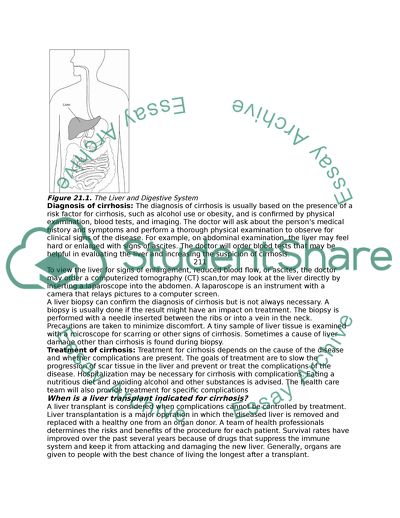Cite this document
(How Cirrhosis Happens Pathologically and Physiologically Essay Example | Topics and Well Written Essays - 2250 words, n.d.)
How Cirrhosis Happens Pathologically and Physiologically Essay Example | Topics and Well Written Essays - 2250 words. https://studentshare.org/english/1827612-how-cirrhosis-happens-pathologically-and-physiologically
How Cirrhosis Happens Pathologically and Physiologically Essay Example | Topics and Well Written Essays - 2250 words. https://studentshare.org/english/1827612-how-cirrhosis-happens-pathologically-and-physiologically
(How Cirrhosis Happens Pathologically and Physiologically Essay Example | Topics and Well Written Essays - 2250 Words)
How Cirrhosis Happens Pathologically and Physiologically Essay Example | Topics and Well Written Essays - 2250 Words. https://studentshare.org/english/1827612-how-cirrhosis-happens-pathologically-and-physiologically.
How Cirrhosis Happens Pathologically and Physiologically Essay Example | Topics and Well Written Essays - 2250 Words. https://studentshare.org/english/1827612-how-cirrhosis-happens-pathologically-and-physiologically.
“How Cirrhosis Happens Pathologically and Physiologically Essay Example | Topics and Well Written Essays - 2250 Words”. https://studentshare.org/english/1827612-how-cirrhosis-happens-pathologically-and-physiologically.


